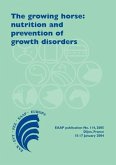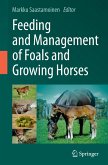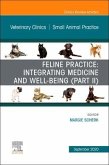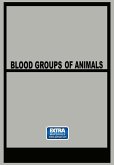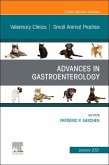Part of the Biology of Growing Animals series, this book presents up-to-date information on the biology of animal nutrition. It describes how dietary modulation of the gastrointestinal function in young and growing farm animals is achieved through different kinds of feed additives, such as probiotics, prebiotics, organic acids, and novel sources of feed enzymes, as well as bioactive components and metabolic modifiers. The book also discusses the role of nutrition in immune response and animal health, the problem of antinutrients - including mucotoxins and some minerals - in animal nutrition, and the biotechnological, molecular, and ecophysiological aspects of nutrition. In addition, safety and legal aspects are presented.
- Critical review and state-of-the art articles written by recognized specialsists in animal nutrition and gastrointestinal physiology
- Novel approaches for improving gastrointestinal function in young farm animals
- New ways of interpretation of basic knowledge of nutrition
The title of this book is somewhat misleading and does not do justice to its contents. One expects a book with such a general title to contain basic descriptions of digestion, absorption and utilisation of nutrients, with sections on nutrient requirements and growth rate just like any other standard text. Instead, it contains very detailed critical reviews of the biotechnology of animal nutrition. According to the Preface, the omission of quantitative aspects of nutrition and feed evaluation was intentional. Having said that, the book is excellent and, to be fair, it does cover the topics listed on the back cover. Much of the information that the book does contain is on topics of current importance, particularly in view of the ban on antibiotic growth promoters in Europe. These growth promoters provided producers with a degree of insurance against possible effects of dietary ingredients on digestive upsets. More attention has to be paid now to the quality of animal feed ingredients and how they might lead to responses other than changes in growth rate and feed conversion efficiency, although these are still important.The book focuses mainly on dietary modulation of gastrointestinal function, but also considers the immune response and other aspects of animal health that are influenced by nutrition. The general theme is that specific feed ingredients alter the gut microflora, enzymes and absorptive capacity, and that these alterations have implications for animal performance. In terms of dietary components, the emphasis is on feed additives, bioactive components and anti-nutritional factors rather than macronutrients such as carbohydrates, protein and lipids. In addition, there are chapters covering safety and legal aspects of ingredients for animal feeds. Each chapter stands alone and there is therefore some inevitable overlap. However, the overlapping topics are usually considered from a different perspective each time.The 21 reviews have been written by active researchers who are acknowledged experts in their respective fields. Each review is up to date and is written to a high scientific level. The technical editing has also been performed to a high standard to provide continuity of style. There are many clear illustrations that support the text, explaining concepts such as nutritional effects on gut morphology, intracellular mechanisms for absorption, metabolic pathways and disease. The tables and graphs are generally clear and useful, although a few graphs are below standard and used defaults offered by spreadsheets.Overall, the book is very informative and should be useful for anyone who wants a comprehensive set of topical reviews on the biotechnology of animal feed additives, gut microbiology and physiological responses. It is not, however, a book on the biology of nutrition.Dr Phil GarnsworthyReader in Dairy ScienceUniversity of NottinghamThe review is now in press with the Elsevier Journal Livestock Science.


